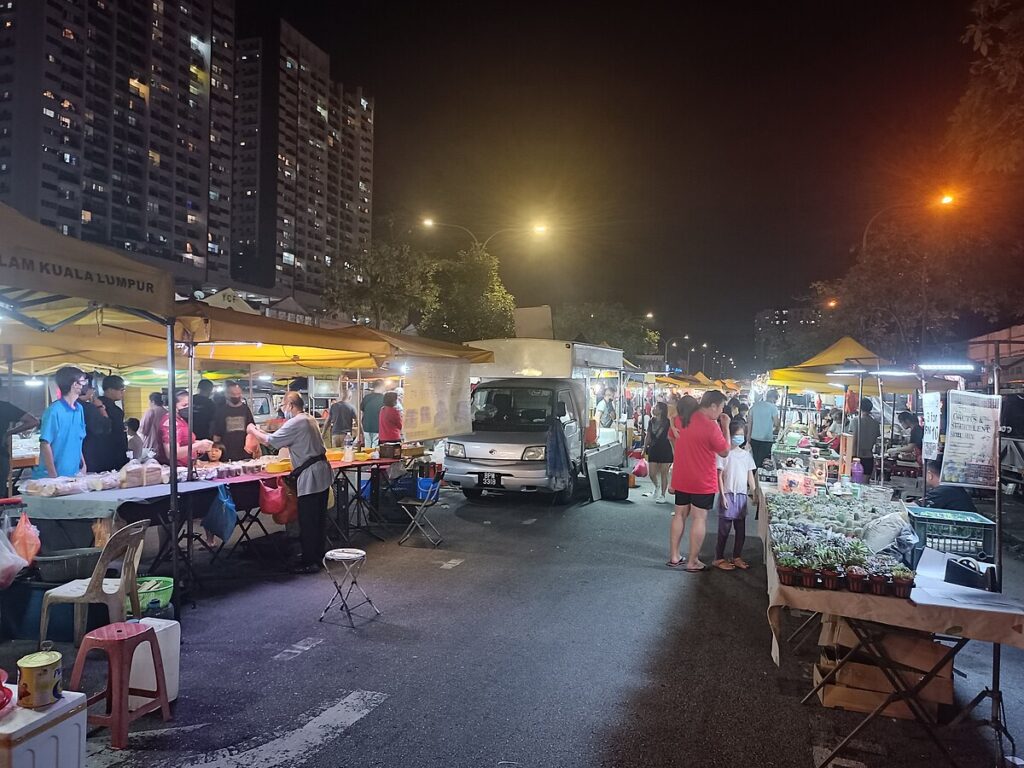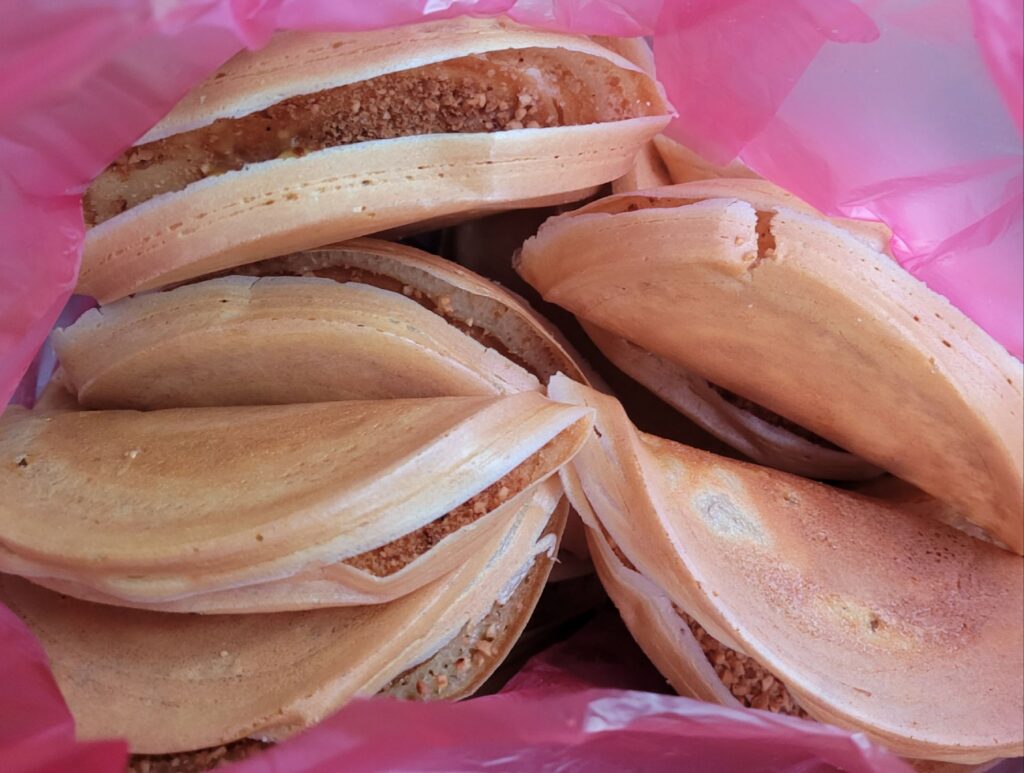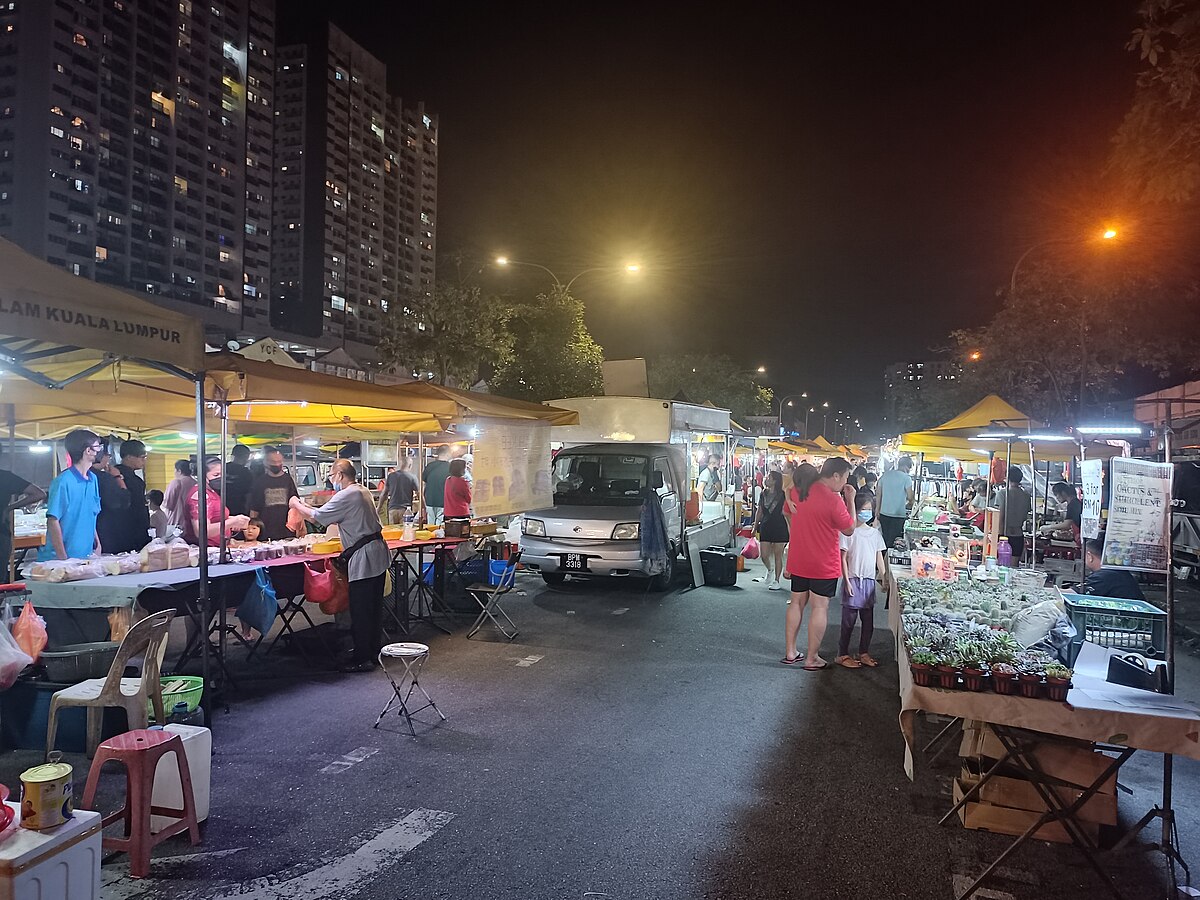Learn Malay Numbers? Why? Imagine this. You stand at the edge of a Pasar Malam, or night market. Sweet smoke from grilling satay mixes with the scent of pandan wafting from colorful kuih (local cakes). Vendors shout out trying to get your attention. Squeezing in between locals trying to get a look at the goods from each stall.
Out from the corner of your eye, you spot a delicious-looking snack. You want it. But you’re stuck not knowing how to ask for it.
Meet Alex. Alex is a traveler, just like you. Alex feels the attraction and atmosphere of the Pasar Malam. Yet, a worry holds Alex back: the language. Pointing might work, but Alex wants more. He wants to connect, to order with a little local flair.
This post follows Alex’s journey from a sotong (blur) tourist to one blending in with the locals. The key? Learning some basic Malay numbers. By the end, you too will have the number skills (from one to one hundred) and key phrases. You will be ready to explore the Pasar Malam and enjoy its tastes.

🧭 Why Bother with Malay Numbers? Alex’s (and Your) Pasar Malam Wins!
Alex first felt a bit lost. So noisy. Spoilt for choices. Prices were sometimes unclear. It felt like a missed chance to truly dive in. Then, he had an idea. Knowing your Malay numbers could make a big difference.
Learning these numbers offers clear benefits for your travels:
- Clear Communication: You will understand prices. You will know quantities. No more guessing games. No more counting fingers.
- Get What You Want: Order the exact number of satay skewers. Choose the precise pieces of kuih.
- Fair Transactions: Understand the total cost. Know the change you should receive.
- Connect with Locals: Everyone appreciates it when visitors try to speak their language. A simple number spoken in Malay can bring a smile.
- Confidence Boost: Ordering food becomes a fun interaction, no longer a source of stress.

🔢 The Building Blocks: Malay Numbers 1-10 (Satu hingga Sepuluh) – Alex’s First Order!
Alex decides to start simple. The aroma of chicken satay is too good to resist. The vendor looks friendly. Here are the first numbers Alex learns, and you can too:
- 0: Kosong (Pronounced: Koh-song)
- Note: Useful for prices like “two Ringgit, zero cents.” Sometimes also used to describe ‘plain’ or ‘empty’
- 1: Satu (Pronounced: Sah-too)
- 2: Dua (Pronounced: Doo-ah)
- 3: Tiga (Pronounced: Tee-gah)
- 4: Empat (Pronounced: Um-pat)
- 5: Lima (Pronounced: Lee-mah)
- 6: Enam (Pronounced: Uh-nahm)
- 7: Tujuh (Pronounced: Too-jooh)
- 8: Lapan (Pronounced: Lah-pahn)
- 9: Sembilan (Pronounced: Sem-bee-lahn)
- 10: Sepuluh (Pronounced: Suh-poo-looh)
Alex in Action:
The vendor smiles, “Ya?” (Yes?)
Alex points to the chicken satay. “Satay ayam. Lima, tolong.” (Chicken satay. Five, please.)
The vendor nods. “Baik. Lima ringgit.” (Good. Five Ringgit.)
Alex understands! Five skewers for five Ringgit. A successful first order, now with a plastic bag with delicious satay for him to enjoy later.

Stepping It Up: Teens & Tens – Malay Numbers 11-19 (Belas) and 20-90 (Puluh)
Alex feels good. That first order was easy. Now, Alex sees some Apam Balik, a sweet folded pancake. The sign says “RM2.00 sekeping” (two Ringgit per piece). Alex wants to buy some for new friends at the hostel. This means needing numbers beyond ten.
A. The “Belas” Brigade (11-19): For Those Bigger Cravings!
Numbers from eleven to nineteen in Malay use a suffix: “belas“. You add it to the root of numbers one through nine (with small changes for one).
- 11: Sebelas (Pronounced: Suh-buh-las) – From “satu” (one) + “belas”
- 12: Dua belas (Pronounced: Doo-ah buh-las)
- 13: Tiga belas (Pronounced: Tee-gah buh-las)
- 14: Empat belas (Pronounced: Um-pat buh-las)
- 15: Lima belas (Pronounced: Lee-mah buh-las)
- 16: Enam belas (Pronounced: Uh-nahm buh-las)
- 17: Tujuh belas (Pronounced: Too-jooh buh-las)
- 18: Lapan belas (Pronounced: Lah-pahn buh-las)
- 19: Sembilan belas (Pronounced: Sem-bee-lahn buh-las)
Alex in Action:
Alex orders several items from another stall. The vendor calculates. “Semua dua belas ringgit.” (All twelve Ringgit.) Alex hands over the money, understanding the total.
B. Counting by Tens (20, 30… 90): Getting Drinks & More!
Walking around in the hot and humid weather is starting to make Alex thirsty. Fresh sugarcane juice, air tebu, looks refreshing. It is usually a few Ringgit. Alex also eyes a box of assorted kuih. This might cost more, requiring numbers in the tens.
Numbers for tens (twenty, thirty, etc.) use the word “puluh“.
- 20: Dua puluh (Pronounced: Doo-ah poo-looh)
- 30: Tiga puluh (Pronounced: Tee-gah poo-looh)
- 40: Empat puluh (Pronounced: Um-pat poo-looh)
- 50: Lima puluh (Pronounced: Lee-mah poo-looh)
- 60: Enam puluh (Pronounced: Uh-nahm poo-looh)
- 70: Tujuh puluh (Pronounced: Too-jooh poo-looh)
- 80: Lapan puluh (Pronounced: Lah-pahn poo-looh)
- 90: Sembilan puluh (Pronounced: Sem-bee-lahn poo-looh)
Alex in Action:
Alex asks for the price of the kuih box. “Kotak kuih ini, berapa harga?” (This box of kuih, how much is the price?)
The vendor replies, “Dua puluh lima ringgit.” (Twenty-five Ringgit.)
Aha! This uses a ten and a unit. Alex needs to learn how to combine them.
The Combo Master: Malay Numbers 21-99 (Putting It All Together)
The kuih box costs “dua puluh lima Ringgit.” Alex sees the pattern. It is the word for the ten, followed by the word for the unit. Simple!
The structure is: [Tens Word] [Unit Word]
Let’s see some examples:
- 21: Dua puluh satu (Twenty-one)
- 22: Dua puluh dua (Twenty-two)
- 35: Tiga puluh lima (Thirty-five)
- 48: Empat puluh lapan (Forty-eight)
- 53: Lima puluh tiga (Fifty-three)
- 67: Enam puluh tujuh (Sixty-seven)
- 74: Tujuh puluh empat (Seventy-four)
- 89: Lapan puluh sembilan (Eighty-nine)
- 99: Sembilan puluh sembilan (Ninety-nine)
Alex’s Transaction (Kuih Box): Alex now understands “dua puluh lima Ringgit.”
Alex gives the vendor a fifty Ringgit note (lima puluh ringgit).
The vendor says, “Terima kasih. Baki dua puluh lima ringgit.” (Thank you. Change is twenty-five Ringgit.)
Alex receives the change and the kuih. “Terima kasih!” Alex says with a smile.
A Note on “Sen” (Cents):
You might see prices like RM2.50. In Malay, this would be “Dua ringgit lima puluh sen.” (Two Ringgit fifty cents). This uses the same “puluh” for tens of cents. For prices like RM2.05, it would be “Dua ringgit lima sen.”
Reaching the Century Mark: Seratus (100) and Beyond (Briefly!)
Alex feels quite skilled now. What if something costs one hundred Ringgit? (Not that you will likely spend so much at a single stall in the Pasar Malam) Or Alex wants to buy many things and the total is high?
- 100: Seratus (Pronounced: Suh-rah-toos)
So, if a total comes to RM95, the vendor will say, “Sembilan puluh lima ringgit.”
If the total is exactly RM100, it is “Seratus ringgit.”
If it is RM105, it is “Seratus lima ringgit.” (One hundred AND five Ringgit – the “and” is implied).
For your Pasar Malam adventures, numbers up to one hundred will cover most food purchases. Knowing “seratus” is a great bonus. (Just for interest, 200 is Dua ratus, and 1000 is Seribu. But let’s focus on our 1-100 range for now!)
Alex’s Pasar Malam Phrasebook: Your Essential Ordering & Paying Kit
Here is a list of useful phrases. Many were used by Alex as you have witnessed earlier. They will help you order and pay.
- How much is this?
- Berapa harga ini? (Pronounced: Buh-rah-pah har-gah ee-nee?)
- I want…
- Saya nak… (Pronounced: Sah-yah nak…)
- Example: Saya nak tiga cucuk satay. (I want three skewers of satay.)
- This one. (When pointing)
- Ini. (Pronounced: Ee-nee)
- One/Two/Three of these.
- Satu ini. / Dua ini. / Tiga ini.
- How many?
- Berapa? (Pronounced: Buh-rah-pah?)
- Yes.
- Ya. (Pronounced: Yah)
- No.
- Tidak. (Pronounced: Tee-dak)
- Please.
- Tolong. (Pronounced: Toh-long)
- Thank you.
- Terima kasih. (Pronounced: Te-ree-mah kah-seh)
- You’re welcome.
- Sama-sama. (Pronounced: Sah-mah sah-mah)
Understanding the Vendor: They will likely use phrases like:
- “[Number] ringgit.” (e.g., “Lima ringgit.”)
- “Ada lagi?” (Anything else?)
- “Semua [number] ringgit.” (All together [number] Ringgit.)
Pro-Tips for Your Pasar Malam Number Crunching Adventure
- Listen Actively: Pay close attention when vendors state prices. It is great practice and forces you to recall your numbers quickly.
- Use Your Fingers: If you feel unsure about a number, you can discreetly use your fingers to show quantity (e.g., hold up three fingers for “tiga”). This can help confirm.
- Carry Small Change (Wang Kecil): Having smaller notes (RM1, RM5, RM10) and coins makes paying easier. Not all vendors can break large notes for small purchases. Most vendors should accept digital payments via Touch ‘n Go.
- Practice Out Loud: Say the numbers. Get used to the sounds.
Conclusion: Learn Malay Numbers – From Novice to Number Navigator – You’re Ready, Alex (and You!)
Alex leaves the Pasar Malam with a full stomach, carrying a bag of tasty treats. More importantly, Alex feels a sense of achievement. Alex connected, ordered, and paid using new Malay skills.
You now have the same tools. You know Malay numbers from one to one hundred. You have key phrases for ordering. Your next Pasar Malam visit can be more than just eating. It can be an active, engaging cultural experience.
Do not aim for perfect pronunciation right away. Aim for communication. Aim for connection. The effort itself is valuable.
What Pasar Malam snack are you most excited to order using your new Malay numbers? Share your thoughts or your own Pasar Malam language tips in the comments below!
Selamat menjamu selera di Pasar Malam! (Enjoy your meal at the night market!)
Downloadable “Pasar Malam Number Survival Kit” PDF COMING SOON
- Contains: Numbers, common food items, simple bargaining scripts.
Thinking of taking your newfound skills around Malaysia?


